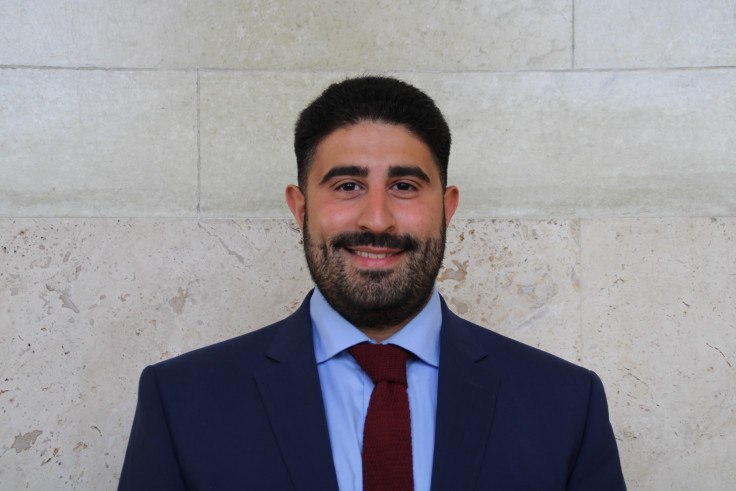20 August 2020
On 14 August 2020, the United States failed to receive support in the UN Security Council (UNSC) to indefinitely extend the UN arms embargo on Iran. US officials stated that as a result they plan to trigger the snapback mechanism of UN sanctions on Iran under UNSC Resolution 2231, which serves as the international endorsement of the Joint Comprehensive Plan of Action (JCPOA). The US move will be strongly contested by its European allies as well as China and Russia. The US ‘maximum pressure’ campaign, prohibiting the economic opportunities the JCPOA was intended to provide Iran in return for the country’s acceptance of limits on its nuclear programme, as well as escalating military pressure, have taken their toll on Iran. Against the backdrop of US presidential elections in November, the coming months are likely to be tumultuous for the JCPOA, with the US latest sanctions attempt and three additional drivers increasing the likelihood of Iran moving up its nuclear escalation ladder.
Iranian responses to maximum pressure: From “strategic patience” to “maximum resistance”
Following the Trump administration’s 2018 decision to exit the JCPOA and reestablish sanctions against Iran, the latter initially responded with a policy of “strategic patience”. It calculated that by continuing to comply with the deal it could obtain many of its benefits, including increased economic opportunities as a result of the lifting of sanctions. To ensure Iran’s continued compliance with the nuclear deal, the E3 resorted to several measures to mitigate the impact of US sanctions on Iran. The EU asserted greater economic and strategic autonomy by, among other things, creating the Instrument in Support of Trade Exchanges (INSTEX) to facilitate trade with Iran in vital goods like food and medicine. In the face of the risk of sanctions or outright US pressure, the private sector has by and large elected not to opt into the EU’s initiatives.
Frustrated by the lack of tangible economic results, and the impact of increased US pressure on Iran’s economy and regional posture, in May 2019 the Iranian government began to shift to a “maximum resistance” stance. This included both decreased implementation of JCPOA provisions as well as non-nuclear measures. US maximum pressure and Iranian maximum resistance nearly erupted into conflict following the US assassination of Major General Ghasem Soleimani and Iranian retaliatory missile strikes on an Iraqi military base housing US troops in early 2020, but cooler heads prevailed and both sides entered a brief period of relative restraint. US moves in the Security Council and three other issues may now threaten this.
Four drivers for Iranian nuclear escalation
Four issues are acting as drivers that could soon push Iran to escalate its nuclear posture and activities. These include the US attempt to snapback UN sanctions, Iran’s dispute with the International Atomic Energy Agency (IAEA), and a sabotage campaign against Iranian strategic nuclear and ballistic missile infrastructure, and, in the context of Iran’s domestic politics, the strengthening of conservative forces skeptical of the JPCOA and multilateral diplomacy.
First, in the absence of an agreement on an extension of the arms embargo which expires in October 2020, the United States has signaled that it will initiate the snapback of UN sanctions on Iran, and sanction those states that do not comply. The E3, Russia, and China have rejected US assertions that it can invoke snapback, with Russia and China citing an international legal precedent that a party that exits an agreement cannot enjoy its benefit. US attempts at a snapback could create a bifurcated international environment, in which the United States and select allies acknowledge that snapback has taken place, while other Security Council permanent members and the rest of the world do not. Iran will view any P5 acceptance of snapback as a further grave violation of the nuclear deal.
A second driver is the ongoing and potentially increased pressure on Iran to grant access to IAEA inspectors to two sites and answer questions about claimed past undeclared nuclear material and nuclear-related activities. Iran has refused to grant the IAEA access, alleging that the request is based on fabricated intelligence and expressing doubts about the agency’s impartiality, although this may also be part of its reduced JCPOA compliance. The IAEA views Iran’s refusal as a breach of its pledge to implement the Additional Protocol (AP), which Iran is doing provisionally. This impasse led the IAEA Board of Governors to adopt a resolution on 19 June calling on the Iranian government to fully cooperate with the agency on the investigation, the first of its kind since 2012. In mid-July, Rafael Grossi, IAEA Director General, pledged that the agency would not back off and warned “it will be bad” if Tehran did not grant access by the end of the month.”
A new and dangerous third dimension that has emerged since at least June is a possible sabotage campaign against Iranian nuclear and ballistic missile infrastructure, possibly aimed at setting back these strategic programmes, as well as alleged offensive cyber operations against Iranian civilian infrastructure as an extension of maximum pressure to inflict as much economic and psychological damage as possible in the remaining months of the current US president’s term.
A fourth dimension is recent changes in Iranian domestic politics, mainly the election of a conservative majority to parliament in February 2020, creating a less hospitable climate towards the JCPOA and multilateral diplomacy. The maximum pressure campaign has devastated the Iranian economy, further constraining the government’s ability to manage the Covid-19 pandemic, which continues to rage in Iran. This trend may yet deepen, especially if a conservative government is chosen in the May 2021 Iranian presidential election.
The Iranian Nuclear Escalation Ladder
In this new context, the Iranian response to concerted pressure is one of progressive escalation of its nuclear related activities. Iranian officials have indirectly defined a nuclear escalation ladder that includes limiting verification and inspection measures, nuclear fuel-cycle activities beyond the JCPOA, and the possibility of exit from the JCPOA and/or Treaty on the Non-Proliferation of Nuclear Weapons (NPT) entirely.
Limiting verification and inspection measures: Iran can further limit the scope of IAEA inspections and verification measures in terms of access to facilities, the number of inspectors, and their level of access, including by ceasing voluntary implementation of the AP, which would further reduce the transparency of the Iranian nuclear programme, and possibly increase the potential for misperceptions or counter-escalations. In response to the IAEA condemnation of 19 June, the Iranian parliament’s National Security and Foreign Policy Committee approved a motion on 23 June that, if passed by the 11th parliament (2020-2024), would oblige the Rouhani government to cease the AP’s provisional implementation. This motion comes on the heels of earlier statements by other senior Iranian officials to reduce cooperation with the IAEA.
Engaging in nuclear fuel-cycle activities beyond the scope of the JCPOA: Iran could deploy more advanced uranium enrichment centrifuges and continue to increase the size and enrichment level of its uranium stockpile beyond the 3.6 percent limit set by the JCPOA. On this front, Behrouz Kamalvandi, the spokesman of the Atomic Energy Organization of Iran (AEOI), asserted at a press conference at the Fordow enrichment facility on 9 November 2019 that “We have the ability to enrich uranium up to 60% and we will do it based on the needs of the country and the directives of our authorities.” It remains to be seen whether or how this option would be affected by damage to Iranian enrichment infrastructure. Iran has also stated it retained the option to return the original design of the IR-40 Arak nuclear plant and heavy water production plant. Under the JCPOA, the reactor was being redesigned to prevent the facility from producing plutonium which could be reprocessed to weapons-usable fissile material, but US refusal to issue new sanctions waivers on the project have thrown a wrench into the works. Ali Akbar Salehi, head of the AEOI, recently said that if the Arak conversion project was not implemented by the Chinese contractor due to US sanctions, Iran may have no choice but to “return to the previous design”.
Leaving the JCPOA and/or NPT: Mohammad Javad Zarif, the Iranian minister of foreign affairs, has declared that “Iran has several options and leaving the JCPOA is one of them.” He is only among the latest senior officials to say so. The Iranian “nuclear” option, however, remains NPT withdrawal. Following earlier statements to this effect by Iranian officials, Zarif clarified in January 2020 that Iran could take other steps before NPT withdrawal, but may have set referral of Iran’s file to the USNC as a red line, after which he declared “we will withdraw from the NPT.” Given the relevance of the outcome of the US presidential election in November 2020 to the Iranian calculus, and postponement of the NPT Review Conference to January 2021, Iran may take a wait and see approach before executing such an option.
Conclusion
External pressure, against a backdrop of domestic fragility, have thus far solicited a limited and carefully calibrated response from Iran. The Islamic Republic’s approach leaves the door open for keeping the JCPOA alive for possible future US re-entry by a Biden administration. In such a case, pressure on Iran at the UNSC and IAEA may be alleviated, though likely not eliminated entirely. Comments by Biden’s top foreign policy advisor have also raised doubts about the sequencing and extent of Trump-sanctions rollback under a new administration. But if the maximum pressure campaign continues, the likelihood for rapid Iranian moves up the escalation ladder increases. It is likely Iran will at first continue limiting verification measures and inspections and engaging in further fuel-cycle activities beyond the scope of the JCPOA. Iran may also seek to increase its own leverage ahead of any future negotiations by moving up these steps, lengthening the period of tension between the parties, and laying the groundwork for a deeper crisis down the road.
Farzan is a Project Researcher in the Middle East WMD Free Zone Project.

